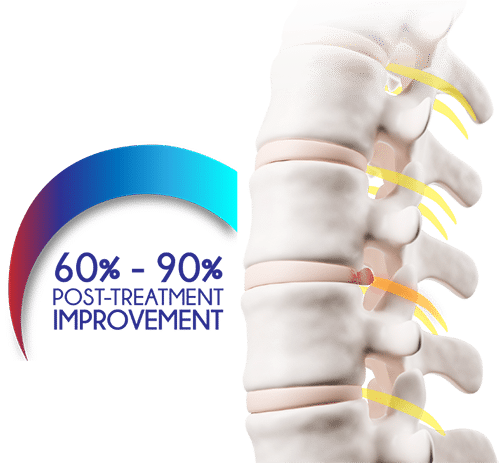BACK PAIN
Herniated Disc
What is it and how do we treat it?
Healthy Spine
The spine serves numerous functions. It supports the weight of the entire body and allows you to move freely. The spine can perform these functions because of three natural curves and strong, flexible muscles. The muscle helps the spine maintain the optimal curvature and alignment. The discs between the bones of the spine, known as intervertebral discs, also serve a crucial function — they cushion the adjacent vertebrae and facilitate smooth, frictionless movements.
Herniated Disc
Lumbar disc herniation is a condition wherein the hard outer shell of the spinal disc breaks or ruptures, and the soft internal nucleus spills outwards. When the spinal discs function properly, they act as shock absorbers to facilitate smooth spinal movements between the vertebrae. But when the spinal discs are damaged, they may bulge or crack, and the internal contents slip out, leading to various problems.
Do you have concerns about your insurance coverage?
We provide free insurance verification for all patients — please fill out this form.
Pain treatments are usually covered by most major medical insurances, including Medicare. Please send us your details for preliminary insurance verification, following which you can schedule an appointment. Our pain doctors will curate personalized vein treatments just for you.
Questions? Call us right away (973) 363-9627
By emailing or contacting us, you are accepting the inherent privacy limitations of online communication. For more information, please read our Digital Communications document. Please respond "STOP" to any text messages to opt out.
Spinal discs serve a crucial function in the lower back. They absorb the shock of movement between two adjacent vertebrae and support the weight of the upper body. Thanks to the spinal discs’ shock absorption capabilities, they help you maintain the optimal range of motion. When the contents of the spinal discs bulge outwards, they may aggravate the surrounding nerves, triggering painful symptoms that radiate down the legs.
HERNIATED DISC
TREATMENT
Physical Therapy
Physical therapy is an essential component of the treatment for disc herniation. Physical therapists examine your posture, perform numerous physical tests, and recommend the ideal exercises to strengthen the essential muscles that support the lumbar spine, thus alleviating pain and discomfort.
Holistic Therapy
Holistic therapy refers to a wide range of non-surgical and non-invasive solutions that restore optimal spinal health and general wellness. Some of the most effective holistic therapies include acupressure, acupuncture, biofeedback, and nutritional supplements.
Surgery
Your pain doctor should only recommend surgery if all other conservative solutions have failed and if your symptoms are severe. If conservative treatment fails to alleviate pain, your doctor may recommend discectomy, one of the most effective surgeries for a herniated lumbar disc.
What to expect after
Herniated Disc Disease Treatment
POST-TREATMENT IMPROVEMENT
Your back might feel a little stiff and sore after surgery, and it may take a few weeks for you to resume your daily activities and work. Some people experience immediate pain relief, but some people notice gradual improvements in their symptoms over several weeks. If you struggle to sit or stand comfortably after the treatment, you can take pain medications to alleviate discomfort.
Your pain doctor may also refer you to a physical therapist who will work closely with you to strengthen your muscles and restore optimal range of motion. You may also have to learn how to perform simple activities, such as bending, twisting, and lifting, without hurting your back.

Will your health insurance cover your pain treatment?
Most pain treatments are covered by most health insurances, including medicare. Our insurance specialists are available to discuss your options call us to get started at (973) 339-0862 or fill out the form below:
